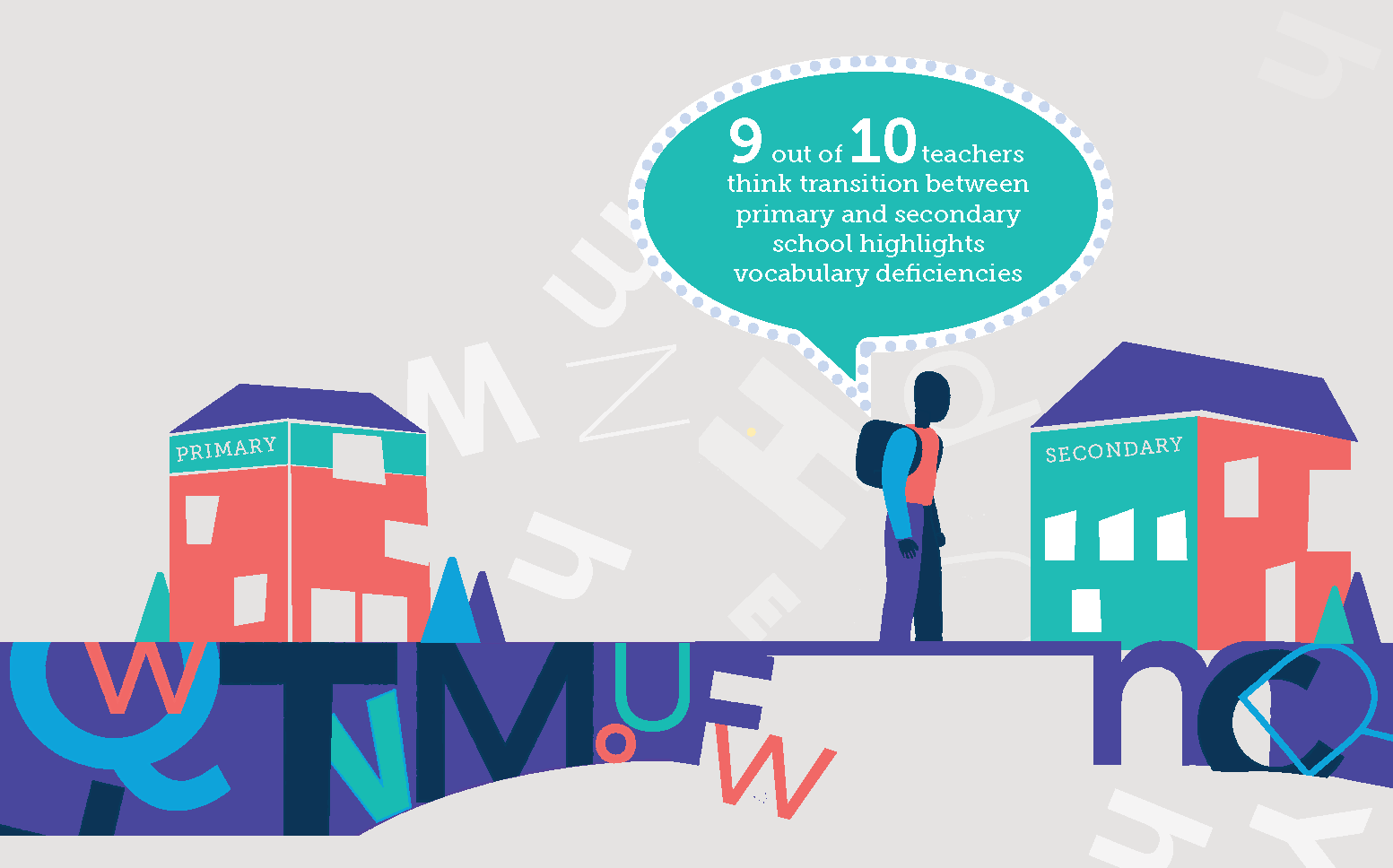Lionel Bolton, Head of English, Languages and Humanities, Oxford University Press
Read the report
What have we discovered?
Our new report, Bridging the Word Gap at Transition, builds on our previous report from 3 years ago, Why Closing the Word Gap Matters. In that first report we highlighted that nearly half of the children in Year 1 and Year 7, in the schools in our survey, had a limited vocabulary, or a word gap (i.e. when a child’s vocabulary is below age-related age expectations), and that this was impacting on their learning. Our latest research reveals that all of the consequences of the word gap identified in the first survey still remain. Not only does a limited vocabulary affect a child’s potential academic success, it can also affect their behaviour, their self-esteem and ultimately their life chances. This new report also reveals that 92% of the teachers that we surveyed told us that the word gap has got worse during the school closures (as a result of Covid-19). And that at the transition between primary and secondary school, vocabulary is particularly problematic for children and harder for teachers to help with.
Why are there challenges with vocabulary development at transition?
Research tells us that children encounter up to 4 times more vocabulary at secondary school than at primary school, and this big jump up is largely, though not entirely, through what you might refer to as ‘academic vocabulary’ – those being words often associated with responding to exam questions. So these could be subject specific terminology, but often they are what are known as ‘tier 2’ words, words that students need to use across their subjects, words such as analyse, summarise, compare and so on. In fact children need these words beyond school, for instance when they go into further education, higher education or employment. And yet 64% of the secondary school teachers we surveyed said that their Year 7 students weren’t at all confident in using academic language. And it is this academic vocabulary that, nearly 90% of the teachers believe, highlights students’ difficulties with vocabulary.
Where do strategic priorities and training fit into this?
This new research revealed that whilst 80% of primary schools have vocabulary as a high strategic priority, at secondary school it drops to 50%. And whilst secondary schools are more likely to have a vocabulary-specific whole school programme, only 1 in 20 of the teachers we surveyed said it was ‘very effective’. So, having vocabulary higher up the priority list in secondary schools and ensuring that the subsequent programme is as effective as possible would seem to be a good starting point. Training is also a key point in the report: the teachers reported to us that only 1 in 4 of them had access to relevant training, particularly from external language experts. However of those that had received training, more than half rated it as ‘very helpful’.
What measures or initiatives might make a difference?
Probably the single biggest difference would be to be able to devote more time to focusing on vocabulary. This is of course easy to say, but harder to do given all the pressures and constraints on teachers’ time. However, over half of the teachers we surveyed said it was the lack of time that hampered their efforts to improve students’ vocabulary. So, allocating more time to focus explicitly on vocabulary, and in particular (though, importantly, not exclusively) on academic vocabulary, in all subjects is a key recommendation coming out of this report. Secondly, building on the good work that already exists between secondary schools and their local feeder primary schools, in terms of communication and collaboration. Specifically this could entail striving to understand more about what students are coming with in terms of vocabulary needs when they arrive in secondary school, and perhaps exploring the potential for greater continuity and consistency in terms of the curriculum – from the perspective of vocabulary. Thirdly, bringing together the wider school community – teaching staff, non-teaching staff, parents, carers and the students themselves – to support children’s vocabulary development. And finally, this report calls on the DfE to do more in all of these areas.
What is OUP doing to help address the word gap?
At Oxford University Press we have amassed a huge amount of evidence through the research we’ve been undertaking over the past 2½ years, including gathering over 3500 responses from teachers. And one of the main things we’ve been able to do with all of this evidence is make it public. We have shared the best practices, shared the case studies, shared the findings, and we’ve seen a huge number of schools and educational organisations connect to try to tackle this issue. We are also working with over 1000 primary and secondary schools specifically on the issue of addressing the word gap. We’ve also been able to learn from everything we’ve been told, which helps to inform the publishing we produce and the training we offer. It’s helped us create word gap specific resource packs and webinars, all of which are freely available on our website. Overall, because language and vocabulary are key to helping children succeed both in school and beyond, so they are at the heart of everything we do at Oxford University Press.

interesting.